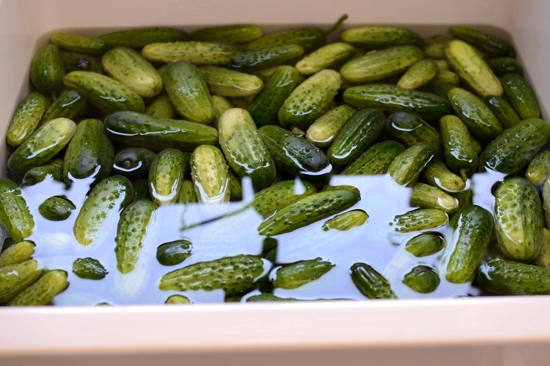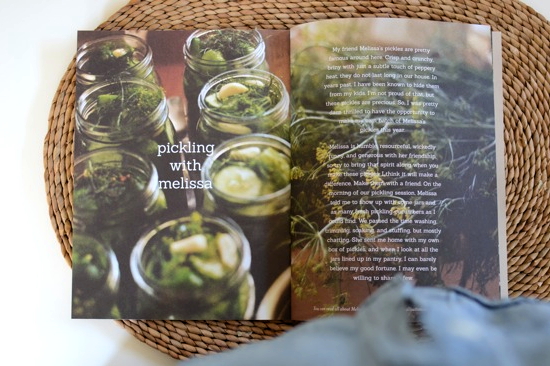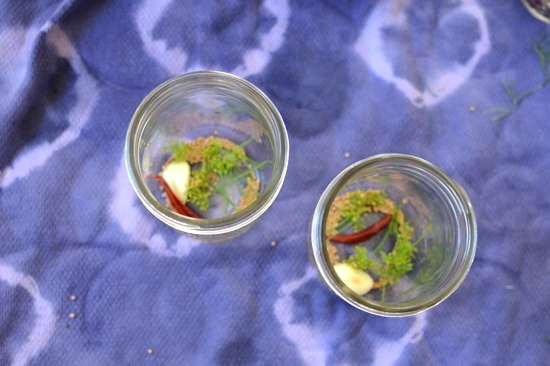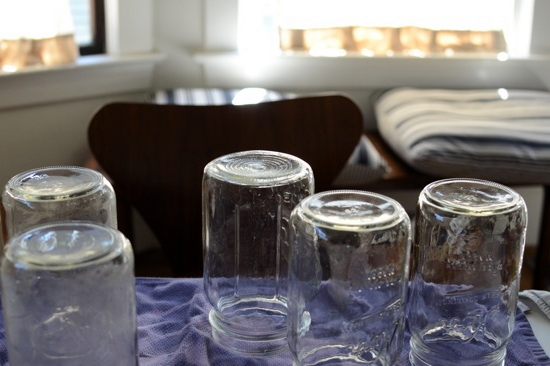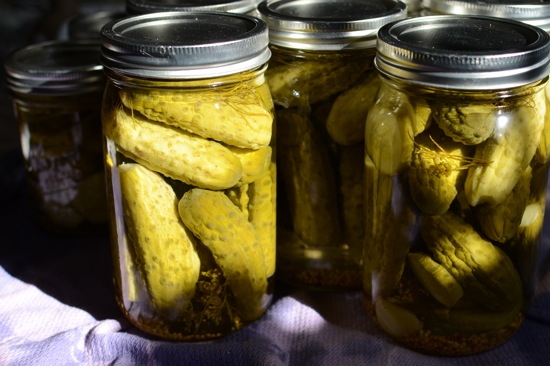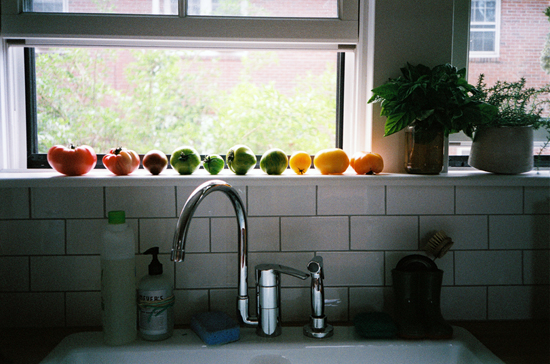
When I think of last summer I can’t help but think about food. I made a lot of good food last summer! This summer has seemed somehow busier and I have not been in the kitchen as much … but of course there are still weeks to go, thankfully. Maybe I can make up for it.
Since we are taking a few days to remember Quarterly, Issue No. 5 (please don’t forget that the last single issues are in the shop for $20 through Monday morning) I thought it would be nice to remember and share some of last summer’s favorite recipes.
Tomatoes last summer were particularly tasty. Sometimes for lunch I would take tomato wedges, some pieces of basil ripped up and big chucks of goat’s milk feta (all from our farmer’s market) and mix it all together in a bowl. I would add good olive oil, balsamic vinegar and salt and pepper to taste. Sometimes I might also add toasted sunflower seeds sprinkled on top at the end or chunk of cucumber if I had them. I’m not sure if you know but feta is a good source of protein. When I knew I was going to have a big dinner this was always a nice, fresh lunch option for me. Those green tomatoes up there were always my favorite! Looking for more this weekend at the market.
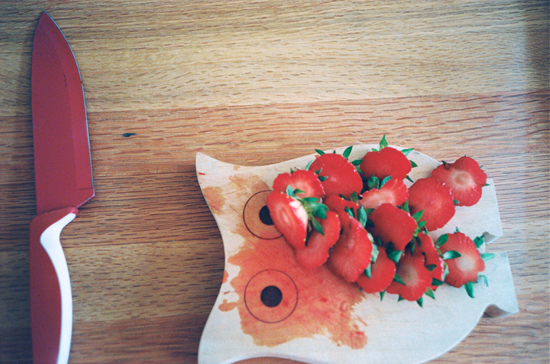
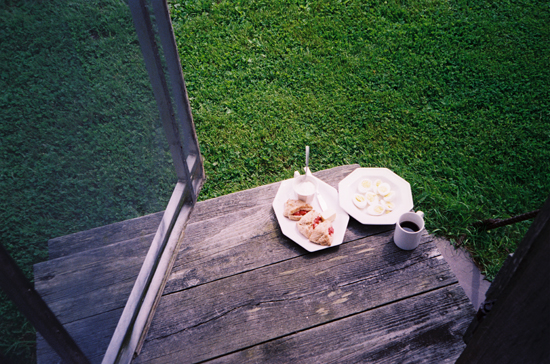
Early last summer I had a small love affair with strawberries (same this happened this year). I got really into making fresh strawberry scones. I started with Molly’s recipe, which I love, and adjusted it a bit to fit my preferences. Here is what I did:
Fresh Strawberry Scones
makes about 8–12 depending on size
1 cup spelt flour
1 cup all purpose flour
2 tsp baking powder
2 T natural sugar
3/4 tsp salt
5 T unsalted butter, cubed and chilled
1/2 C whole milk
1 egg
1-1/2 to 2 C strawberries, cut into small chunks or slices
Preheat oven to 425ºF/220ºC. Prepare one or two baking sheets with a layer of parchment paper. Mix together all dry ingredients (flours, baking powder, salt, sugar) in large bowl. Cut the cold butter into the dry ingredients using two knives or your fingers; mixture should resemble course meal. In a small bowl mix milk and egg, beat well. Pour wet into dry and bring together with as few strokes as possible. Turn dough out onto counter and knead a couple times (if you need a little more milk you can add it here but dough should be on the dry side). Pat dough into a 1-inch thick round. Cut into 8 or 12 triangular wedges. Cut each of those wedges in half down the middle horizontally layering a small finger-full of strawberries in between the two pieces of dough and then putting them back together like a sandwich. Use your fingers to pinch the ends together. You’ll see strawberries and their juices busting out the sides but that is okay. They are meant to feel/look like little pockets, almost like pita, in the end. Another way to handle them is to slice each of your 8–12 wedges like a pita and place the strawberries inside. I have found both work well. Just take your time. Place them on the baking sheets a few inches apart from each other (they will spread out). Bake for 12–15 minutes or until golden. Let them cool before eating alone or with good yogurt on the side.
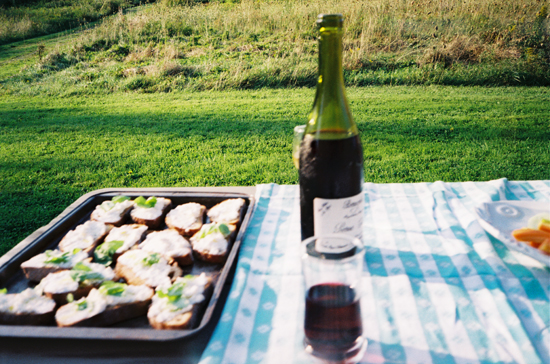
One of the easiest things to make in the summer is crostini. Friends coming over last minute: crostini. Heading to a BBQ: crostini. Too hot to make dinner: crostini. For me it’s stale or fresh baguette sliced up, brushed with butter or olive oil and salted, toasted and then decorated in some way. These had fresh ricotta (again, another good source of protein) and herbs. We also drizzled olive oil on them again once they were put together. Other favorite crostini include: pesto with fresh tomato, goat cheese with honey, salami with sharp cheddar or something sweeter like smashed raspberries with a drop of maple syrup. I’m glad there is still time for me to get my crostini on this summer!
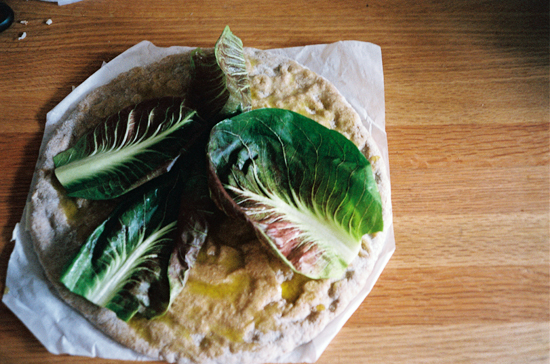
And while on the topic of easy, I made a lot of pizzas last summer. I bought pre-made doughs and threw on mixtures of whatever I had. One of my favorites was started here: olive oil, radicchio, fresh tomato, garlic, mozzarella, parmesan and herbs. I bought little pizza stones last summer so that helps things. Dust those with a little cornmeal (and the bottom of your pizza) and slide it into the oven. I bake at 425ºF/220ºC until done. I’d like to say that I’ll be trying to make my own pizza dough this summer but to be perfectly honest, I don’t think I’ll have the time. Instead I’ll just keep a few prepared doughs (made here in Portland) on hand as usual. If there’s one thing I know about summer in Maine it’s that it’s damn busy! I’m trying my best to just keep up. Hopefully this dispatch about food will get my juices flowing again. I’ll keep you posted!




